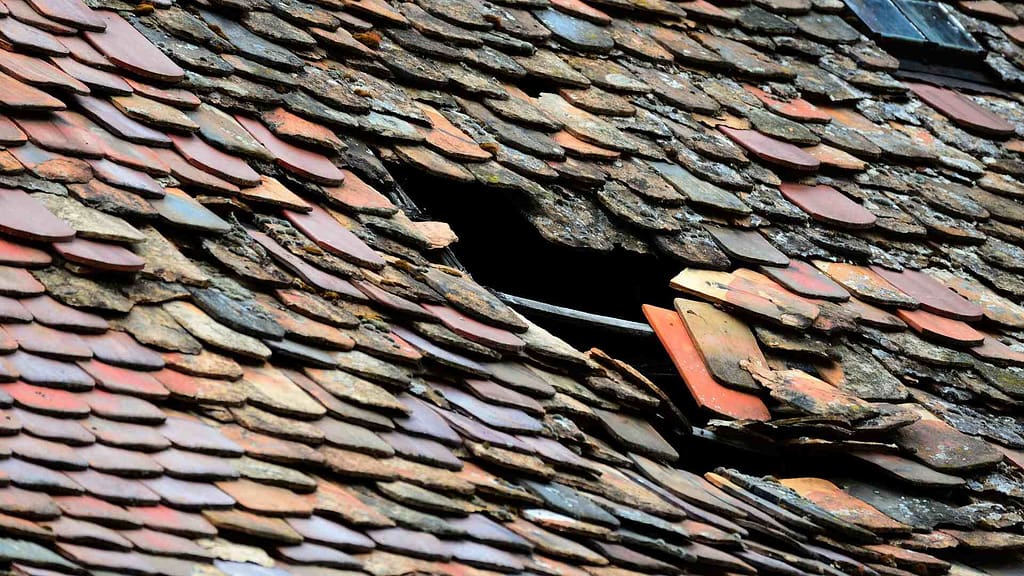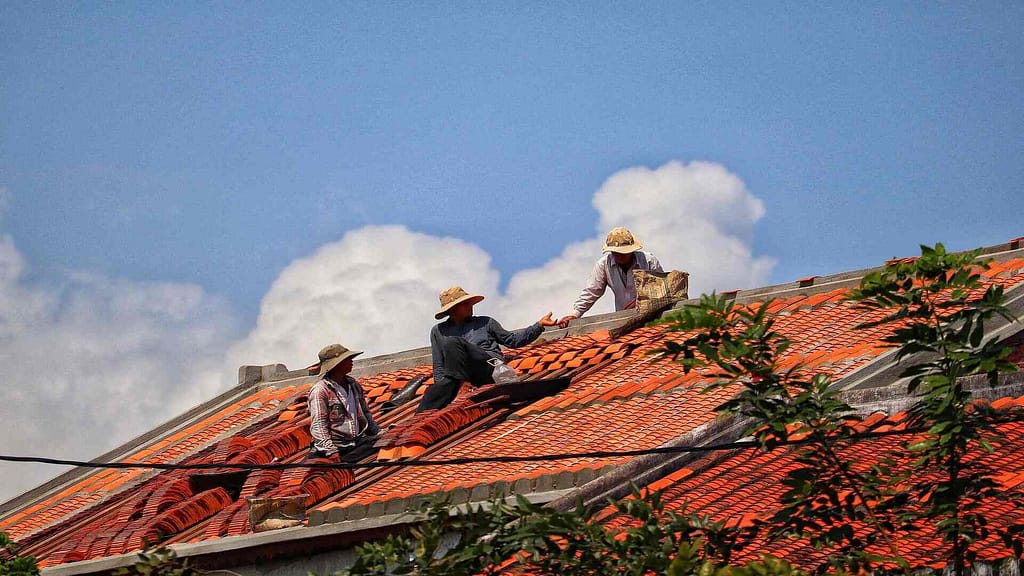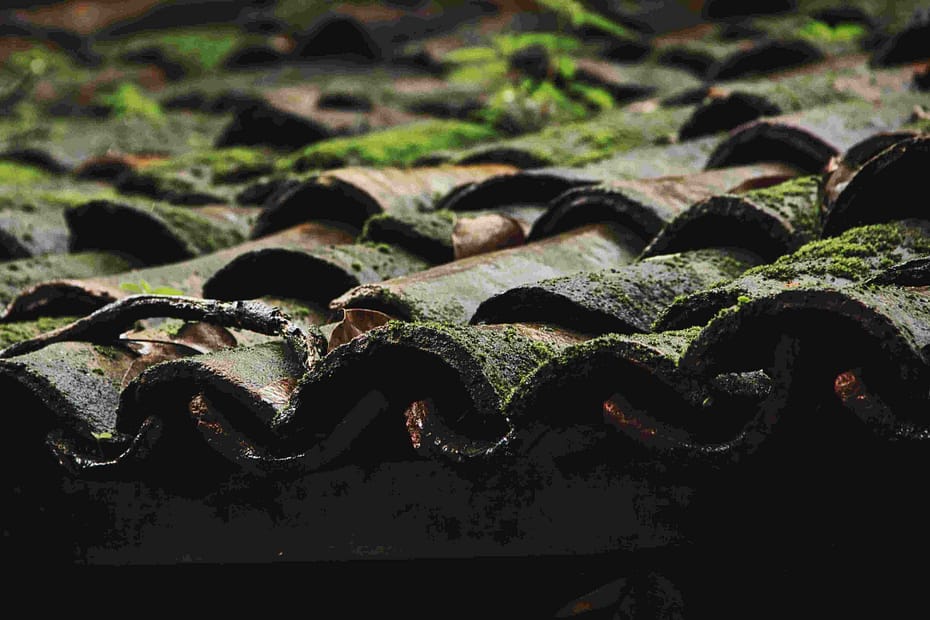How to remove moss from roof? You can use a mossicide. Simply apply a mossicide to kill the moss. Then follow up with a light bristle brush in the next few days and gently scrub from the top of the tiles toward the ground with water.
Table of contents
Understanding Moss
Moss is a tiny green plant. It’s soft to touch and spreads out like a green carpet. Unlike most plants that need soil to grow, moss can grow on hard surfaces. It gets its food and water from the air.

Why Does Moss Grow On Roofs?
Moss on roofs traps moisture, causing gradual damage. While it looks natural, it’s a silent threat to our homes. So why do we often see moss on roofs?
Moisture
Moss loves moisture. Areas of a roof that stay damp for longer, whether due to shade from trees, lack of sunlight, or other reasons, provide the perfect environment for moss to grow. In Washington, the high humidity level is a big reason moss grows everywhere. From the ground to house roofs, the moisture helps it spread.
Shade
Roofs that are shaded for most of the day, perhaps by nearby trees or buildings, offer a cooler environment that moss prefers.
Debris
Over time, small bits of debris like leaves, twigs, or even dust can accumulate on roofs. This debris can trap moisture, and it can also provide organic material that feeds the moss, helping it to grow.
Airborne Spores
Similarly to Mushrooms, moss reproduces through spores, tiny cells that can be carried by the wind. If these spores land on a suitable spot on your roof, they can start to grow, especially if the conditions are right.
So, when a roof is both wet and shady, moss thinks it’s the perfect home. Knowing this helps people figure out how to stop moss from growing on their roofs.
Potential Risks Of Moss Buildup On Your Roof

Moss buildup on roofs poses a variety of concerns for homeowners. Not only can it compromise the aesthetic appeal of a home, but it can also lead to more pressing structural issues.
Here are the potential risks of moss buildup on your roof:
- Leaks: Moss can lift up the roof pieces, like shingles. This can let water get inside your house, leading to leaks.
- Shingle Damage: Moss can cause the edges of shingles to lift or curl, making them vulnerable to wind damage and water intrusion.
- Accelerated Aging: Moss keeps your roof wet. When a roof stays wet, it can wear out quicker. This means you might have to fix or change your roof sooner than you thought.
- Structural Issues: Over time, persistent leaks caused by moss can lead to more significant problems, including rot in the roof decking, attic, or even walls.
- Aesthetic Decline: Moss can cause unsightly green and black streaks, decreasing a home’s curb appeal.
- Pest Attraction: The damp environment created by moss can attract pests like insects, which might find their way into your home.
- Safety Hazards: Moss can make rooftops slippery, posing a risk for those who might need to walk on the roof for repairs or maintenance.
Addressing moss buildup early on can help mitigate these potential risks and save homeowners significant time, effort, and money in the long run.
How To Clean and Remove Moss Buildup On Your Roof

Cleaning moss off your roof can help it last longer and keep your home safe. Let’s dive in on how to rid your roof of moss.
Safety First
Before you start, make sure you have a good ladder and maybe even a friend to hold it. Wear shoes that won’t slip, and be very careful when walking on the roof.
Apply Moss Cleaner or Mossicide
After applying the mossicide and giving it time to work, you might notice that the moss starts to turn brown or gray, indicating its deterioration.
Waiting for Moss Death
After a few days when your moss has met it’s timely death. You can use a gentle bristle brush or a low-pressure water spray to remove the dead moss from the roof. A simple garden house might do the trick.
Maintenance And Preventing Moss Growth On Roofs

After cleaning moss off your roof, you’ll want to keep it at bay. Here’s how to prevent its return:
Keep Gutters Clean
Water can puddle on your roof if gutters are clogged. Clean them regularly to stop this moss from returning. Also inspect the roof for depressions. You may need to repair the depression to prevent puddling.
Trim Overhanging Branches
Trees shading your roof can help moss grow. By cutting back branches, you’ll let more sunlight reach your roof. If your neighbors tree is touching your roof. Consider trimming at the property line.
Good Airflow Helps
A roof with good airflow dries faster. This makes it harder for moss to grow. Consider upgrading ridge caps to a higher ventilating versions to increase roof drying performance.
Check Your Roof Often
Look at your roof every few months. Catching and removing small moss patches early is easier than waiting.
Zinc Strips or Copper Flashing
Installing strips of zinc or copper along the ridge cap or near the top of the roof allows rainwater to come in contact with these metals as it flows down the roof. Over time, this interaction releases trace amounts of zinc or copper ions into the runoff.
Conclusion
Wrapping things up, it’s clear that while moss might give some a sense of nature or a quaint, rustic look, it’s not good for roofs. It can cause problems that end up costing a lot of money. The good thing is, with the right steps, these problems can be stopped before they start.
Knowing about moss and how it grows is important. By cleaning our roofs and doing a few simple things to keep the moss away, we can make our roofs last longer and keep our homes safe. And always remember, taking care of our roof means taking care of our home.
Fact checked by Adrian Catolico – 8/25/23
